Fernando Andreotti
University of Oxford, Institute of Biomedical Engineering, Dept. Engineering Sciences, Oxford, UK
Deep Semi-Supervised Embedded Clustering (DSEC) for Stratification of Heart Failure Patients
Jan 17, 2021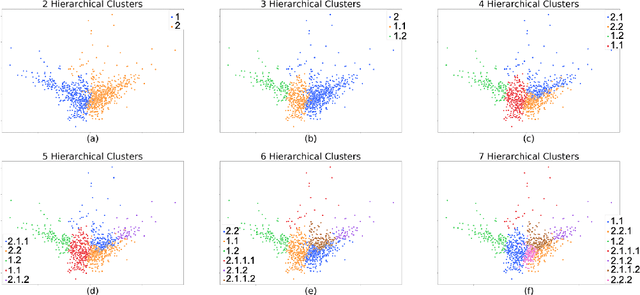
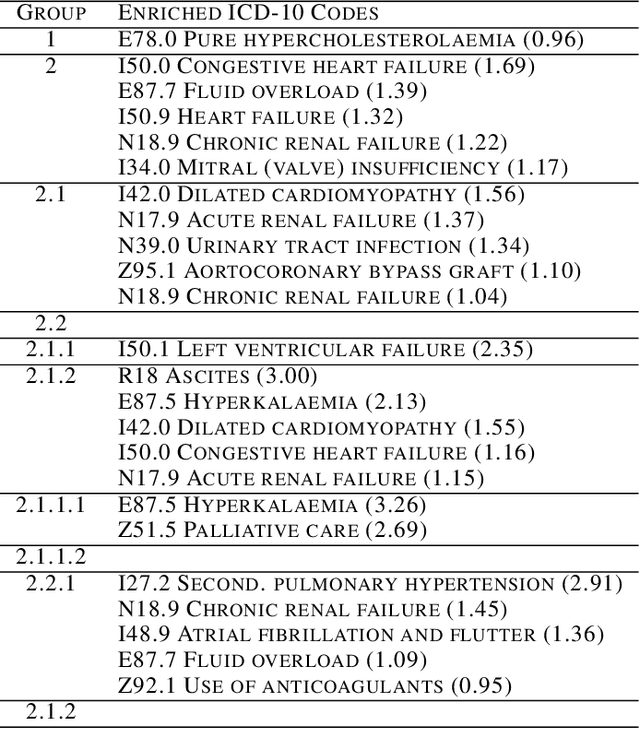
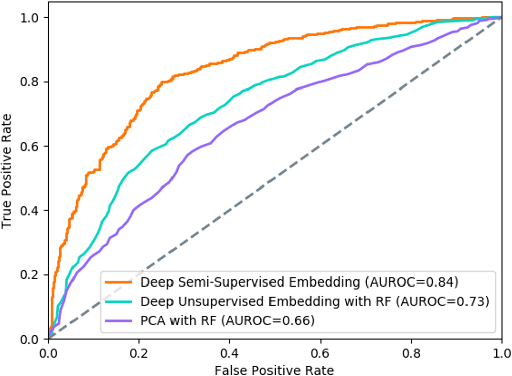
Abstract:Determining phenotypes of diseases can have considerable benefits for in-hospital patient care and to drug development. The structure of high dimensional data sets such as electronic health records are often represented through an embedding of the data, with clustering methods used to group data of similar structure. If subgroups are known to exist within data, supervised methods may be used to influence the clusters discovered. We propose to extend deep embedded clustering to a semi-supervised deep embedded clustering algorithm to stratify subgroups through known labels in the data. In this work we apply deep semi-supervised embedded clustering to determine data-driven patient subgroups of heart failure from the electronic health records of 4,487 heart failure and control patients. We find clinically relevant clusters from an embedded space derived from heterogeneous data. The proposed algorithm can potentially find new undiagnosed subgroups of patients that have different outcomes, and, therefore, lead to improved treatments.
Prediction of the onset of cardiovascular diseases from electronic health records using multi-task gated recurrent units
Jul 16, 2020
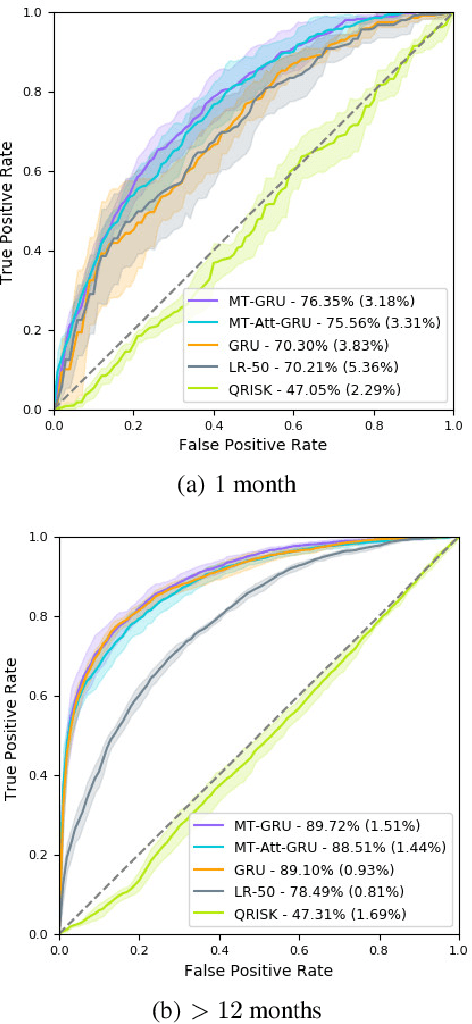
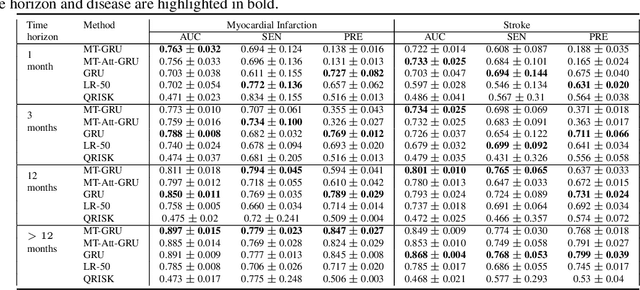
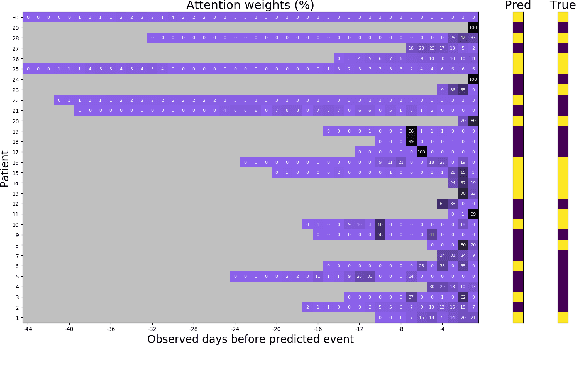
Abstract:In this work, we propose a multi-task recurrent neural network with attention mechanism for predicting cardiovascular events from electronic health records (EHRs) at different time horizons. The proposed approach is compared to a standard clinical risk predictor (QRISK) and machine learning alternatives using 5-year data from a NHS Foundation Trust. The proposed model outperforms standard clinical risk scores in predicting stroke (AUC=0.85) and myocardial infarction (AUC=0.89), considering the largest time horizon. Benefit of using an \gls{mt} setting becomes visible for very short time horizons, which results in an AUC increase between 2-6%. Further, we explored the importance of individual features and attention weights in predicting cardiovascular events. Our results indicate that the recurrent neural network approach benefits from the hospital longitudinal information and demonstrates how machine learning techniques can be applied to secondary care.
Detection of REM Sleep Behaviour Disorder by Automated Polysomnography Analysis
Nov 12, 2018
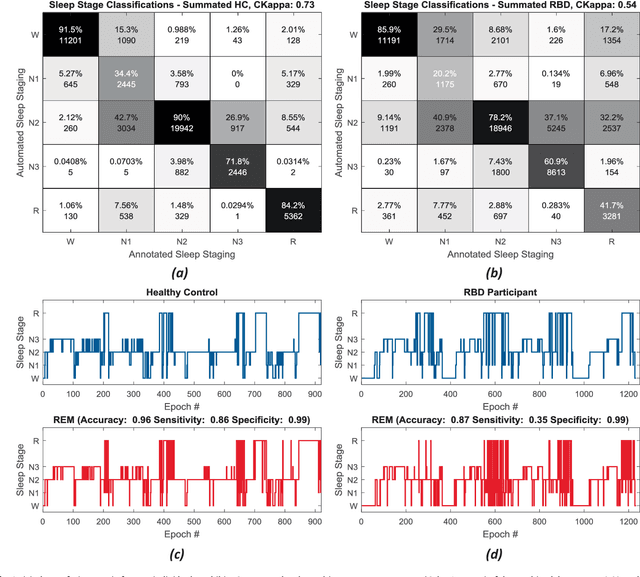
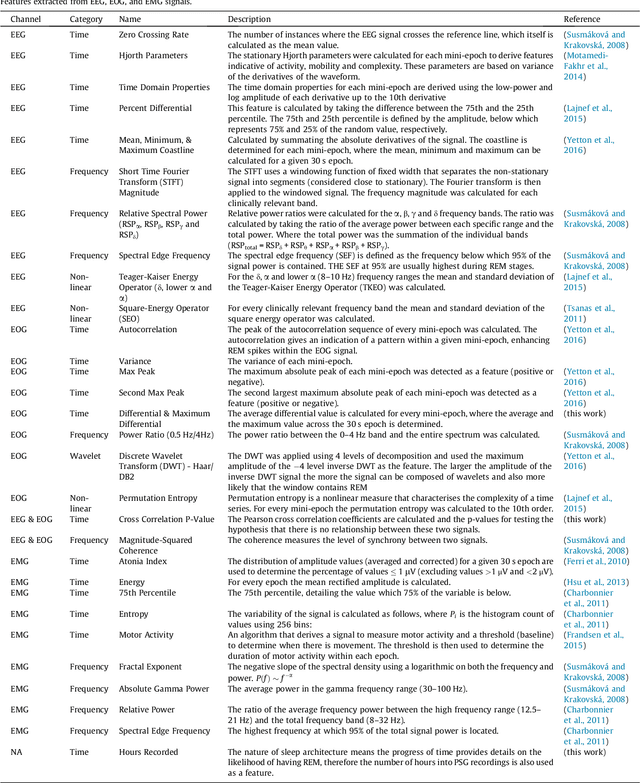
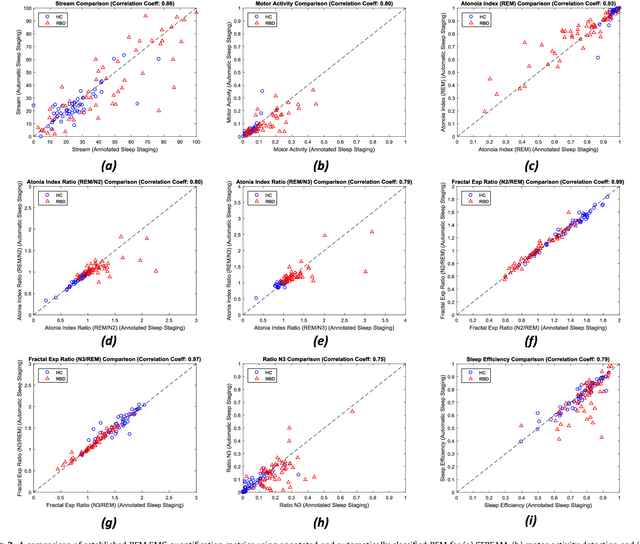
Abstract:Evidence suggests Rapid-Eye-Movement (REM) Sleep Behaviour Disorder (RBD) is an early predictor of Parkinson's disease. This study proposes a fully-automated framework for RBD detection consisting of automated sleep staging followed by RBD identification. Analysis was assessed using a limited polysomnography montage from 53 participants with RBD and 53 age-matched healthy controls. Sleep stage classification was achieved using a Random Forest (RF) classifier and 156 features extracted from electroencephalogram (EEG), electrooculogram (EOG) and electromyogram (EMG) channels. For RBD detection, a RF classifier was trained combining established techniques to quantify muscle atonia with additional features that incorporate sleep architecture and the EMG fractal exponent. Automated multi-state sleep staging achieved a 0.62 Cohen's Kappa score. RBD detection accuracy improved by 10% to 96% (compared to individual established metrics) when using manually annotated sleep staging. Accuracy remained high (92%) when using automated sleep staging. This study outperforms established metrics and demonstrates that incorporating sleep architecture and sleep stage transitions can benefit RBD detection. This study also achieved automated sleep staging with a level of accuracy comparable to manual annotation. This study validates a tractable, fully-automated, and sensitive pipeline for RBD identification that could be translated to wearable take-home technology.
SeqSleepNet: End-to-End Hierarchical Recurrent Neural Network for Sequence-to-Sequence Automatic Sleep Staging
Oct 01, 2018
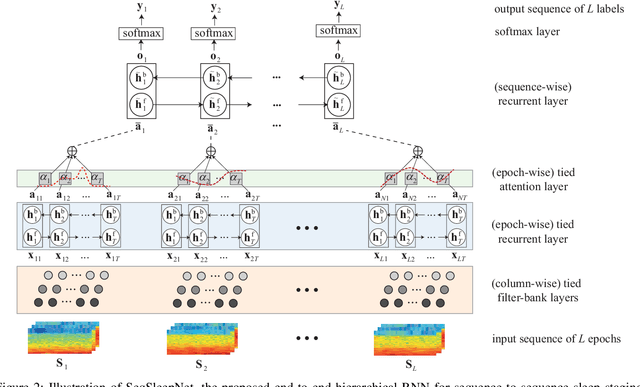
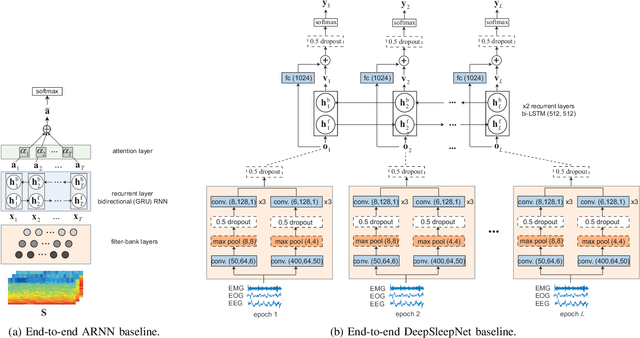

Abstract:Automatic sleep staging has been often treated as a simple classification problem that aims at determining the label of individual target polysomnography (PSG) epochs one at a time. In this work, we tackle the task as a sequence-to-sequence classification problem that receives a sequence of multiple epochs as input and classifies all of their labels at once. For this purpose, we propose a hierarchical recurrent neural network named SeqSleepNet. The network epoch processing level consists of a filterbank layer tailored to learn frequency-domain filters for preprocessing and an attention-based recurrent layer designed for short-term sequential modelling. At the sequence processing level, a recurrent layer placed on top of the learned epoch-wise features for long-term modelling of sequential epochs. The classification is then carried out on the output vectors at every time step of the top recurrent layer to produce the sequence of output labels. Despite being hierarchical, we present a strategy to train the network in an end-to-end fashion. We show that the proposed network outperforms state-of-the-art approaches, achieving an overall accuracy, macro F1-score, and Cohen's kappa of 87.1%, 83.3%, and 0.815 on a publicly available dataset with 200 subjects.
Joint Classification and Prediction CNN Framework for Automatic Sleep Stage Classification
Sep 04, 2018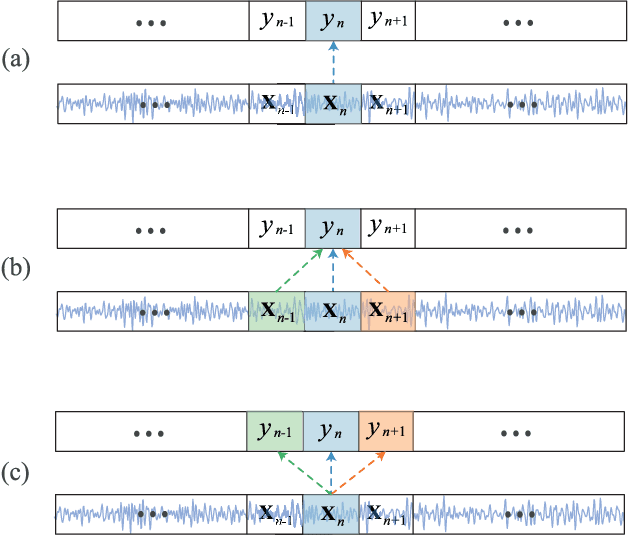

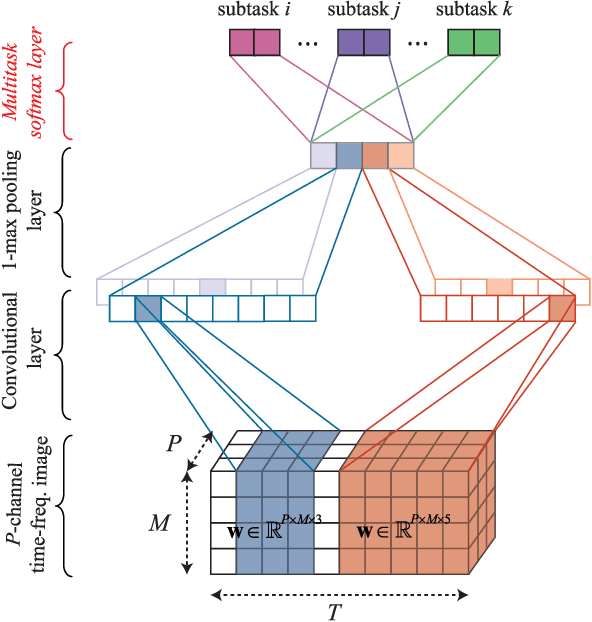

Abstract:Correctly identifying sleep stages is important in diagnosing and treating sleep disorders. This work proposes a joint classification-and-prediction framework based on CNNs for automatic sleep staging, and, subsequently, introduces a simple yet efficient CNN architecture to power the framework. Given a single input epoch, the novel framework jointly determines its label (classification) and its neighboring epochs' labels (prediction) in the contextual output. While the proposed framework is orthogonal to the widely adopted classification schemes, which take one or multiple epochs as contextual inputs and produce a single classification decision on the target epoch, we demonstrate its advantages in several ways. First, it leverages the dependency among consecutive sleep epochs while surpassing the problems experienced with the common classification schemes. Second, even with a single model, the framework has the capacity to produce multiple decisions, which are essential in obtaining a good performance as in ensemble-of-models methods, with very little induced computational overhead. Probabilistic aggregation techniques are then proposed to leverage the availability of multiple decisions. We conducted experiments on two public datasets: Sleep-EDF Expanded with 20 subjects, and Montreal Archive of Sleep Studies dataset with 200 subjects. The proposed framework yields an overall classification accuracy of 82.3% and 83.6%, respectively. We also show that the proposed framework not only is superior to the baselines based on the common classification schemes but also outperforms existing deep-learning approaches. To our knowledge, this is the first work going beyond the standard single-output classification to consider multitask neural networks for automatic sleep staging. This framework provides avenues for further studies of different neural-network architectures for automatic sleep staging.
 Add to Chrome
Add to Chrome Add to Firefox
Add to Firefox Add to Edge
Add to Edge